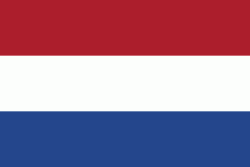Teylers Museum (Teylers Museum)
Teylers Museum is an art, natural history, and science museum in Haarlem, Netherlands. Established in 1778, Teylers Museum was founded as a centre for contemporary art and science. The historic centre of the museum is the neoclassical Oval Room (1784), which was built behind the house of Pieter Teyler van der Hulst (1702–1778), the so-called Fundatiehuis (Foundation House). Pieter Teyler was a wealthy cloth merchant and banker of Scottish descent, who bequeathed his fortune for the advancement of religion, art, and science. He was a Mennonite and follower of the Scottish Enlightenment.
In his will, Pieter Teyler stipulated that his collection and part of his fortune should be used to establish a foundation for their promotion: Teylers Stichting. The Teyler legacy to the city of Haarlem was split into two societies: Teylers First or Theological Society (Dutch: Teylers Eerste of Godgeleerd Genootschap), intended for the study of religion and Teylers Second Society (Dutch: Teylers Tweede Genootschap), which was to concern itself with physics, poetry, history, drawing, and numismatics.
The executors of Teyler's will, the first directors of Teylers Stichting, decided to establish a centre for study and education. Under a single roof, it would house all manner of suitable artifacts, such as books, scientific instruments, drawings, fossils, and minerals. The concept was based on a revolutionary ideal derived from the Enlightenment: that people could discover the world independently, without coercion by church or state. The example that guided the founders in establishing Teylers Museum was the Mouseion of classical antiquity: a "temple for the muses of the arts and sciences" that could also serve as a meeting place for scholars and the venue for various collections.
In his will, Pieter Teyler stipulated that his collection and part of his fortune should be used to establish a foundation for their promotion: Teylers Stichting. The Teyler legacy to the city of Haarlem was split into two societies: Teylers First or Theological Society (Dutch: Teylers Eerste of Godgeleerd Genootschap), intended for the study of religion and Teylers Second Society (Dutch: Teylers Tweede Genootschap), which was to concern itself with physics, poetry, history, drawing, and numismatics.
The executors of Teyler's will, the first directors of Teylers Stichting, decided to establish a centre for study and education. Under a single roof, it would house all manner of suitable artifacts, such as books, scientific instruments, drawings, fossils, and minerals. The concept was based on a revolutionary ideal derived from the Enlightenment: that people could discover the world independently, without coercion by church or state. The example that guided the founders in establishing Teylers Museum was the Mouseion of classical antiquity: a "temple for the muses of the arts and sciences" that could also serve as a meeting place for scholars and the venue for various collections.
Map - Teylers Museum (Teylers Museum)
Map
Country - Netherlands
 |
 |
The four largest cities in the Netherlands are Amsterdam, Rotterdam, The Hague and Utrecht. Amsterdam is the country's most populous city and the nominal capital. The Hague holds the seat of the States General, Cabinet and Supreme Court. The Port of Rotterdam is the busiest seaport in Europe. Schiphol is the busiest airport in the Netherlands, and the third busiest in Europe. The Netherlands is a founding member of the European Union, Eurozone, G10, NATO, OECD, and WTO, as well as a part of the Schengen Area and the trilateral Benelux Union. It hosts several intergovernmental organisations and international courts, many of which are centred in The Hague.
Currency / Language
| ISO | Currency | Symbol | Significant figures |
|---|---|---|---|
| EUR | Euro | € | 2 |
| ISO | Language |
|---|---|
| NL | Dutch language |
| FY | West Frisian language |















